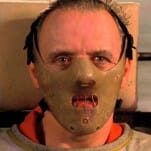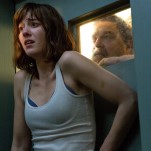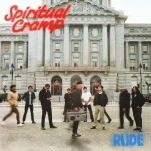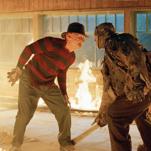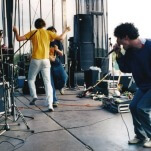At 25, the Grim Fantasy of The Green Mile Begs for Frank Darabont’s Hollywood Return
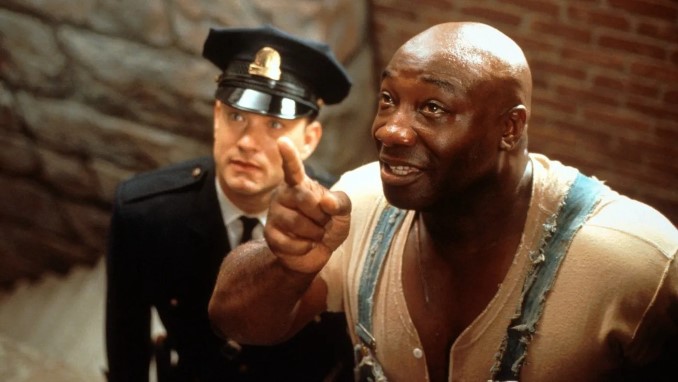
Five years ago, in the fall of 2019, I found myself one afternoon chatting on the phone with a longtime filmmaking idol, director Frank Darabont. Ostensibly, we were there to talk about Darabont’s all-time classic prison drama The Shawshank Redemption, which was celebrating its 25th anniversary with a brief return to theaters, where it had underperformed in the autumn of 1994 before becoming a perennial video rental/TV broadcast titan in the years to follow. The director’s gratefulness for the film’s enduring popularity was clear, even as he demurred to fully embrace the zenith of its legacy–he questioned at the time whether Shawshank should really continue to hold the #1 all-time spot on IMDB’s top 250 films after all these years, laughing off the idea that his own creation could be honestly described as superior to the likes of Citizen Kane or The Godfather by any self-respecting film geek. But my favorite moment of the conversation wasn’t actually related to Shawshank–it was when I asked the director whether he was aware that his other Stephen King prison adaptation, 1999’s The Green Mile, also appeared prominently in the same IMDB all-time rankings, at #28 (currently #26). And as it turns out, Darabont apparently had no clue, being both surprised and delighted by the realization that his other film had also ultimately made such a lasting impression with the same viewers.
This circumstance, that even the movie’s writer-director wasn’t quite fully aware of the esteem his film had generated over the years, feels oddly apropos for The Green Mile, now celebrating its own 25th anniversary. Despite strong reviews, a slew of Academy Award nominations and audience acclaim, The Green Mile never felt like it quite approached the monolithic stature that Shawshank has subsequently established. The 1999 death row drama is more of a strange, unwieldy beast than the more focused Shawshank, which had the benefit of being a more grounded prison story entirely rooted in its self-contained jailhouse universe and the wide array of realistic characters who dwelt there. The Green Mile is simultaneously smaller in cast but broader in its themes and locales, venturing outside the prison walls to both investigate the circumstances of John Coffey’s imprisonment and the lives of the unexpectedly compassionate guards who watch over such a somber place. It’s a much more “Stephen King-esque” narrative in general, in fact, combining elements of magical realism (a trick-performing mouse befriends a death row inmate) and the overtly supernatural in the form of Coffey’s empathic powers with an ensemble pieced together from the sort of motley crew of malcontents, dreamers and unabashed sadists who fill out so many of the author’s stories.
The horror of the job itself, and the reality of this place’s literal function, are intentionally blunted and smoothed by the compassion of the guards who serve on the Cold Mountain Penitentiary’s death row, which carries the titular nickname of the “Green Mile.” They feature some of director Darabont’s most frequent collaborators, including perennial good luck charm Jeffrey DeMunn, the only actor to appear in every Darabont feature: Shawshank, The Green Mile, The Majestic, and The Mist, along with The Walking Dead and Mob City as well. These men recognize the somber role of their station in life, but also believe strongly in the basic tenets of human dignity: They see their death row as an impersonal tool of state justice but take no thrill or pleasure in shuffling each condemned man to the waiting electric chair. Rather, they attempt to give each person passing through the Green Mile the most comfortable, respectful experience they can–that is, until newly arrived guard Percy Wetmore (Doug Hutchison) upends the place with the kind of barely concealed bloodlust that would hopefully disqualify someone from ever coming near defenseless prisoners of the state. Percy represents the worst kind of human opportunist, a sadist who has purposely sought out the career path that will allow him to inflict as much pain as possible under the guise of law enforcement. He’s the kind of prison worker that supervising guard Paul Edgecomb (Tom Hanks) dreads encountering.
This utter lack of compassion represented by Percy, and again by inmate William “Wild Bill” Wharton (a wonderfully deranged and massively irritating Sam Rockwell), is balanced by the surprising thoughtfulness of the hulking John Coffey, played by a never-better Michael Clarke Duncan as a man who has been tormented throughout his life with supernatural blessings and burdens he has never been given the tools to understand. Coffey is not exactly blessed with an advanced intellect, but he’s shockingly pure of heart all the same, believing instinctually that a higher power has given him his gifts with the intent for him to use them in reducing the latent suffering and pain around him. This, however, makes Coffey into a long-ailing sponge for the evils of the world, sick and bloated with the negative energy he has cleansed from his surroundings, battling the grief and bitterness of realizing that he’s been condemned by his fellow men all the same despite his desires to help others. Coffey is a martyr, a sacrificial lamb who ultimately chooses to face death for his false imprisonment as an escape from the world’s wanton cruelty. His death is presented as tragedy; mankind destroying something of great virtue because we (as always) have failed to understand and appreciate it. Given that this is Stephen King, though, humanity is mostly lucky that Coffey was inherently virtuous–it’s not difficult to imagine a King antagonist (like the oft-appearing Randall Flag, or the energy vampires of Doctor Sleep) using these same types of abilities to sow the seeds of discord wherever they go, or create a cult of personality.
Regardless, John Coffey and The Green Mile reveal not just the persistent, earthy humanism of author King, but also Darabont’s own attraction to such earnest, emotional storytelling, qualities of the novelist’s work that likely drew the filmmaker’s interest in the first place, eventually making him the preeminent adapter of King’s novels. The two have always made an intuitive match: In Shawshank, Darabont tempers the original short story’s more flighty and cautious Andy Dufresne to instead build a warmer characterization in service of the central friendship between Andy and Red, amplifying the cathartic payoff of Andy’s escape, Red’s eventual release, and the drive to see the pair reunited on the other side of those concrete walls. In The Mist, Darabont likewise leans more strongly into emotion than in the more vaguely hopeful and uncertain ending to King’s original story, instead diving into full melodrama for an ending that is, like it or hate it, among the most memorably bleak and devastating in the genre’s history. The unifying trait was so often Darabont’s earnestness in approaching stories with characters who championed elemental human aspirations such as hope or altruism, resisting modern tendencies to cloud the ideological simplicity of those settings with layers of protective cynicism.
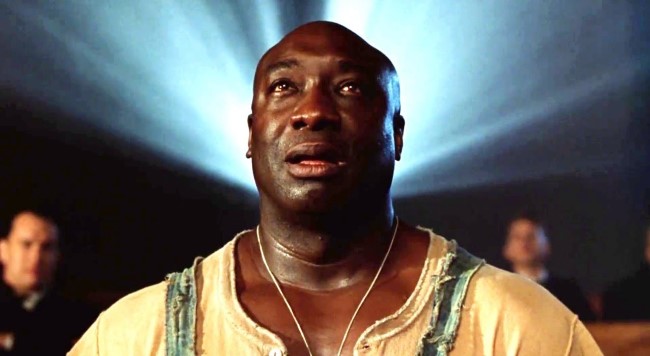
Alas, it’s now been almost 18 years since the last Frank Darabont feature film, 2007’s throwback creature feature The Mist, which was made when the director was still just 48 years old. This was the moment that he segued more heavily into television, directing episodes of series like Raines and The Shield before lending his character-building touch to the groundbreaking first season of AMC’s zombie epic The Walking Dead in 2010. That first season would go on to reaffirm Darabont’s legacy as a gifted storyteller able to find and highlight powerful moments of pathos within the framework of a Romero-style genre story, but it also cast a spotlight on the director’s tempestuous, hard-to-work-with reputation and perfectionistic nature, which would eventually lead to a massive, public rift with his penny-pinching employers at the network. The resulting fallout felt like the closing of a book on Darabont’s career, with only one more project–2013’s TNT drama Mob City, canceled after one season–before an extended hiatus that has now stretched for more than a decade. Has it been a true retirement? Hollywood blacklisting? Or some combination of the two? Darabont’s name has occasionally cropped up, attached to one project or another trapped in development hell, or whispered as an uncredited script consultant, but it feels like an incredible waste that a guy with two films in the IMDB top 26 of all time hasn’t been able to get a full project off the ground for the last 11 years, if indeed he still wants to.
There does seem to be light, however, at the end of this particular tunnel. The year 2025 will officially see the return of Frank Darabont to high-profile directorial gigs thanks to the fifth and final season of Netflix’s Stranger Things, on which the director helmed not one but two episodes. It’s a mammoth undertaking for a massively budgeted show, one of the most ambitiously expensive in television history and absolutely the equal of the average blockbuster feature film. One wonders, in fact, if Darabont’s time away will result in any difficulties as he applies his style to a format that has become vastly more dependent upon digital FX than any prior movie in his filmography, but at the very least, it will be a thrill to see his name on screen once again. And as in his beloved adaptations of King, it’s likely that the fraught conclusion of Stranger Things will allow him to ply his distinct talent for the merging of mysticism and sentimentality.
Will the return be the beginning of a full-on Frank Darabont revival? Perhaps by this time next year, we’ll be hearing the first details of his next Stephen King adaptation, the master reasserting himself on the scene to take on another one of the author’s less-appreciated stories. Or maybe Darabont will just contentedly slide back into retirement, now feeling like the hiatus is on his own terms. Hope is a good thing–maybe the best of things–so I’ll continue to hope for the former. But oh, god, sometimes the Green Mile seems so long.
Jim Vorel is Paste’s Movies editor and resident genre geek. You can follow him on Twitter or on Bluesky for more film writing.













